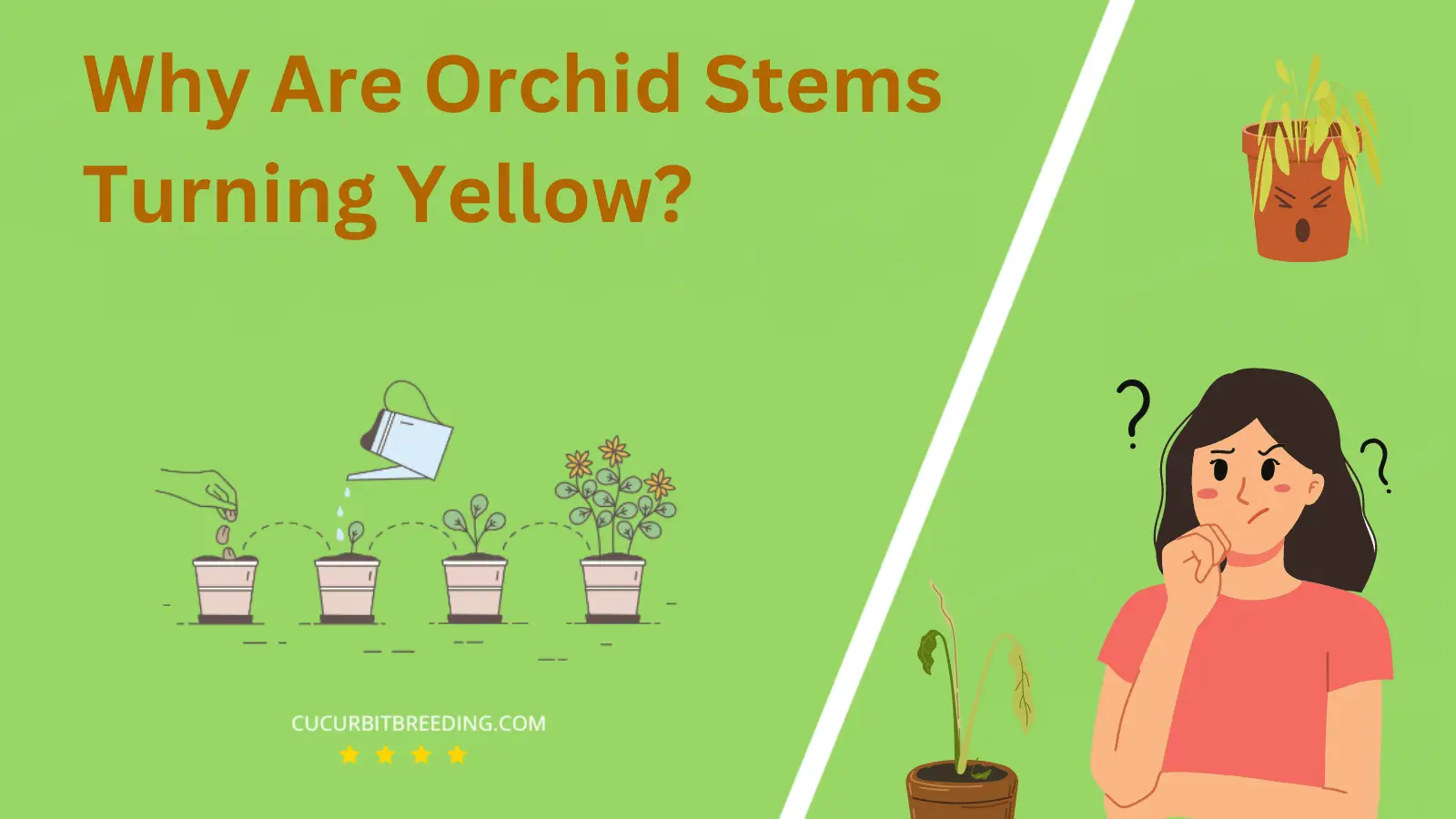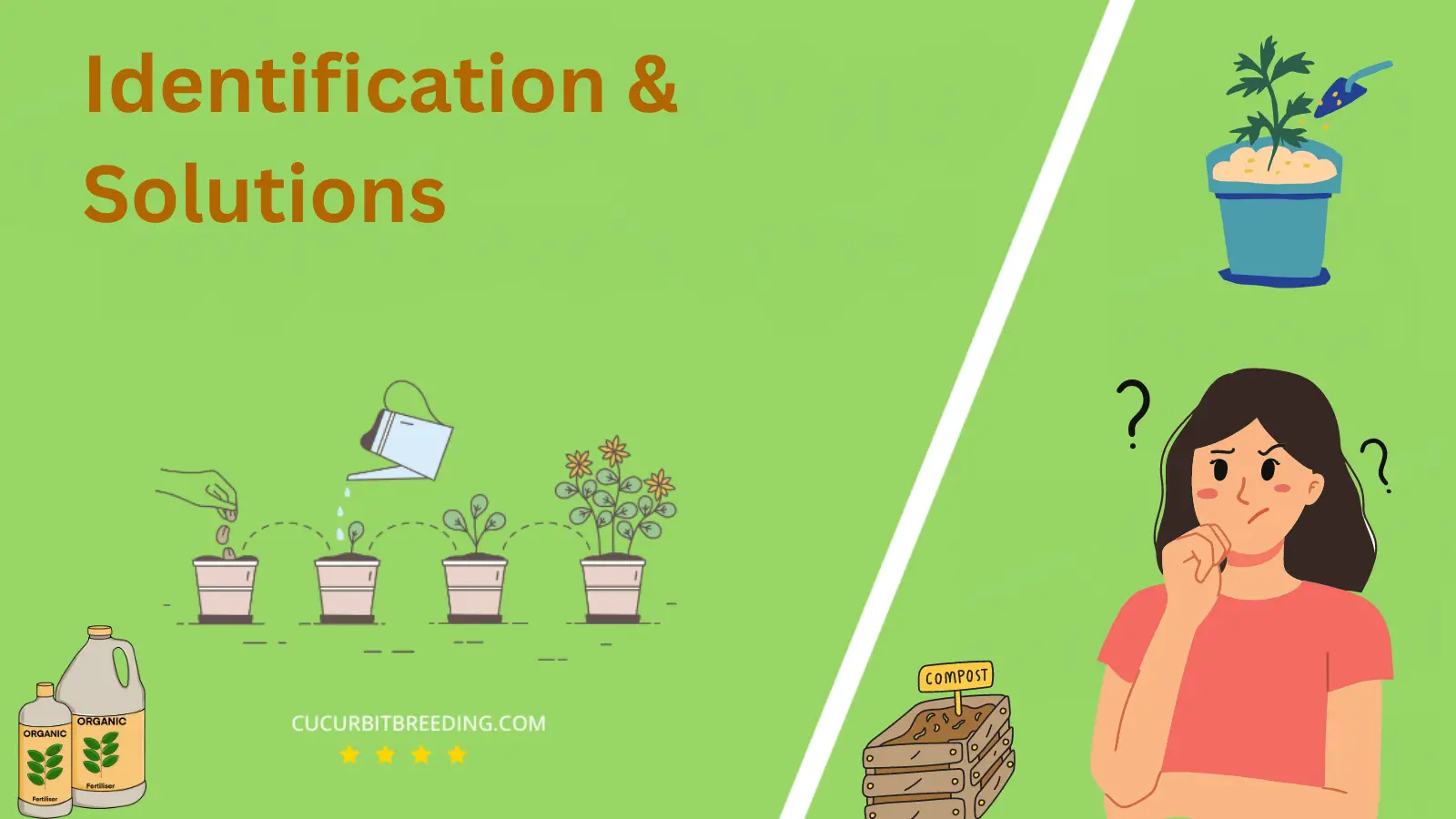
Witnessing the elegant stems of your orchids turning yellow can be a startling experience, stirring up a whirlwind of questions.
Are your beloved plants bidding farewell far ahead of time? Or is this color shift a cryptic signal, echoing an obscure botanical phenomenon? This puzzling change can plunge any green thumb into a profound inquiry, seeking to unravel the forces at work behind this alarming transformation.
Why Are Orchid Stems Turning Yellow?
1. Lack of sunlight
| Description | The lack of sunlight causes the orchid stems to turn yellow due to reduced photosynthesis. |
|---|---|
| Solution | Increase exposure to sunlight to prevent yellowing of orchid stems. |
Orchid stems may turn yellow due to inadequate sunlight. Photosynthesis, the process by which plants produce energy, requires sunlight. Without enough light, your orchid cannot effectively perform photosynthesis, which can lead to discoloration, such as yellowing of the stems.
Solution: To rectify this situation, alter the location of your orchid. Place it somewhere that receives bright, but indirect, sunlight. Too much direct sunshine can burn the leaves while too little can cause yellowing. Ideally, the plant should receive 10-15 hours of light per day, but not all of it direct sunlight.
Moreover, consider using a grow light if the natural sunlight is not enough, especially in winter months. You can monitor the effectiveness of the light adjustment by noting any changes to the plant’s coloration – improvements should be visible in a few weeks.
2. Overwatering
| Description | causes root rot, leading to nutrient deficiency and chlorophyll breakdown, resulting in yellowing stems. |
|---|---|
| Solution | Reduce watering and ensure proper drainage to prevent overwatering. |
Orchid stems often turn yellow due to overwatering. When orchids receive more water than they can absorb, it can lead to waterlogging and root rot. Root rot can block the absorption of necessary nutrients, causing the tips and the stems to turn yellow. Overwatering not only softens the plant’s tissues, but can also prevent oxygen from reaching the roots, leading to plant stress and discoloration.
To address and rectify overwatering, you need to ensure that you are using a well-draining pot and potting mix. It’s recommended that you water your orchids just enough to keep them hydrated, typically about once a week. Make sure the growing medium has dried out before watering again. Always empty any remaining water in the plant saucer to prevent the roots from soaking and rotting. More severe cases of root rot may require a change of potting mix or even a repot of the plant. Always remember that each orchid can have different watering requirements, so it’s important to understand the individual needs of your plant.
3. Nutrient deficiency
| Description | Nutrient deficiency causes orchid stems to turn yellow, affecting their overall physiological function. |
|---|---|
| Solution | Provide a balanced fertilizer to address nutrient deficiency and prevent yellowing of orchid stems. |
Orchid stems turning yellow can be a symptom of nutrient deficiency, particularly a scarcity of nitrogen. Nitrogen is a key component for plant growth and chlorophyll production which gives plants their green color. When they’re deficient, orchids cannot produce enough chlorophyll, causing the stems to turn yellow.
Nutrient deficiency can affect the plant’s overall health, not just the color of the stems, potentially leading to stunted growth, less vigorous blooms, or even plant death if not addressed.
The immediate solution to this issue is to provide the plants with an appropriate orchid-specific fertilizer which should include all necessary macro and micro-nutrients. Administer this according to label instructions, typically every other watering. Over the longer term, pay attention to the plant’s general needs, ensuring it’s getting adequate light, moisture, and that it’s planted in a suitable substrate.
By caring for your orchids the right way, the issue of yellowing due to nutrient deficiency can be resolved, and you can enjoy their vibrant colors and flowers.
4. Pests or diseases
| Description | Nutrient deficiency causes orchid stems to turn yellow, affecting their overall physiological function. |
|---|---|
| Solution | Provide a balanced fertilizer to address nutrient deficiency and prevent yellowing of orchid stems. |
Orchids may have their stems turning yellow because of an infestation from pests or diseases. Pests such as scales, mites, and mealybugs can suck the sap from your orchid, leading to the yellowing of the stems. On the other hand, diseases like root rot or viral infections can also cause the stems to turn yellow as the plant’s health deteriorates.
To mitigate these problems, it is crucial to maintain a healthy environment for your orchids. For pests, consider using natural methods like releasing beneficial insects that prey on common orchid pests. Alternatively, you could use insecticidal soaps or horticultural oils. However, it is important to apply these solutions judiciously, as some can harm your plants if overused.
As for diseases, the best defense is a good offense. Prevent diseases from occurring by watering your orchids properly; too much water can lead to root rot which could cause your stems to yellow. Regularly inspect your orchids for signs of disease, and quarantine any infected plants to prevent the disease from spreading. As a general rule, practice good plant hygiene by cleaning your tools and pots to prevent the transmission of diseases.

5. Aging or natural deterioration
| Description | Provide a balanced fertilizer to address nutrient deficiency and prevent yellowing of orchid stems. |
|---|---|
| Solution | Provide adequate water, light, and temperature conditions to prevent orchid stems from turning yellow. |
One common reason why orchid stems might be turning yellow is due to the aging or natural deterioration process of the plant. As the orchid is a living organism, it is subject to aging and its parts, including stems, naturally dull and discolor over time. This can be seen in yellowing stems which is part of the plant’s lifecycle.
This is especially true for blooms that have been in place for several weeks or months. At a certain age, the plant’s strength starts to decline and its vitality diminishes, hence causing parts such as stems to turn yellow. This is a normal part of plant aging and should not be a cause of alarm.
Solution: There isn’t a great deal that can be done to counteract aging, but keeping the plant healthy can mitigate some of these effects. Ensuring orchids receive appropriate light levels, adequate water, and regular feeding can maintain their vigor and health. When a stem turns yellow and it’s due to aging, allow the natural process to happen. The orchid will typically shed the yellow stem itself when it’s ready. It’s part of the plant’s natural cycle of growth and renewal.
6. Environmental stress (e.g., temperature changes)
| Description | leads to the breakdown of chlorophyll, causing orchid stems to turn yellow. |
|---|---|
| Solution | Avoid temperature changes to prevent yellowing orchid stems. |
Orchid stems may turn yellow due to environmental stress, specifically temperature changes. Orchids are tropical plants and are sensitive to drastic changes in temperature, especially cold. Experiencing consistent or sudden temperature drops could lead to yellowing of orchid stems as their cells get damaged, causing discolouration.
To rectify this issue, maintaining a consistent temperature around your orchids is crucial. Orchids prefer a temperature range of 65 to 75 degrees Fahrenheit during the day, and about 10 degrees cooler at night. Avoid placing your orchids near vents, drafts, or windows that may expose them to drastic temperature changes. Try to maintain the ideal environmental temperature for your orchids to prevent the orchid stems from yellowing and to keep them healthy and flourishing.
7. Improper care or maintenance
| Description | , such as lack of nutrients or water, causes a decrease in chlorophyll production, resulting in yellowing leaves. |
|---|---|
| Solution | Proper pruning, watering, and fertilizing will help improve plant health and prevent issues. |
If orchid stems (or pseudobulbs) are turning yellow, one common reason could be that the plant is not receiving the proper amount of water. Improper watering – both under and overwatering – is a common cause of orchid distress and may result in the yellowing of stems. Orchids have unique water requirements. Overwatering can lead to root rot, and can starve the orchid of vital oxygen, leading to yellowing.
To fix this water-related problem, you should ensure the orchid is experiencing a good watering regimen. Ideally, you should only be watering your orchid once a week and adjust frequency depending on the season. Allow the soil to dry out completely before watering again. Orchids prefer a slightly dry environment, making overwatering a common mistake. When you water, thoroughly soak the soil until water runs out of the drainage holes.
Also consider the quality of the water. High mineral content in water can harm the orchid, resulting in discoloration. Therefore, use rainwater, distilled, or water passed through a reverse osmosis system if you can. At the same time, be sure that your orchid pot drains well to avoid stagnant water and encourage healthy root growth.
Remember that different types of orchids require slightly different care, so it’s good to know exactly what type of orchid you have. With the right balance of water, you can help to restore the stem color and general health of your orchid.